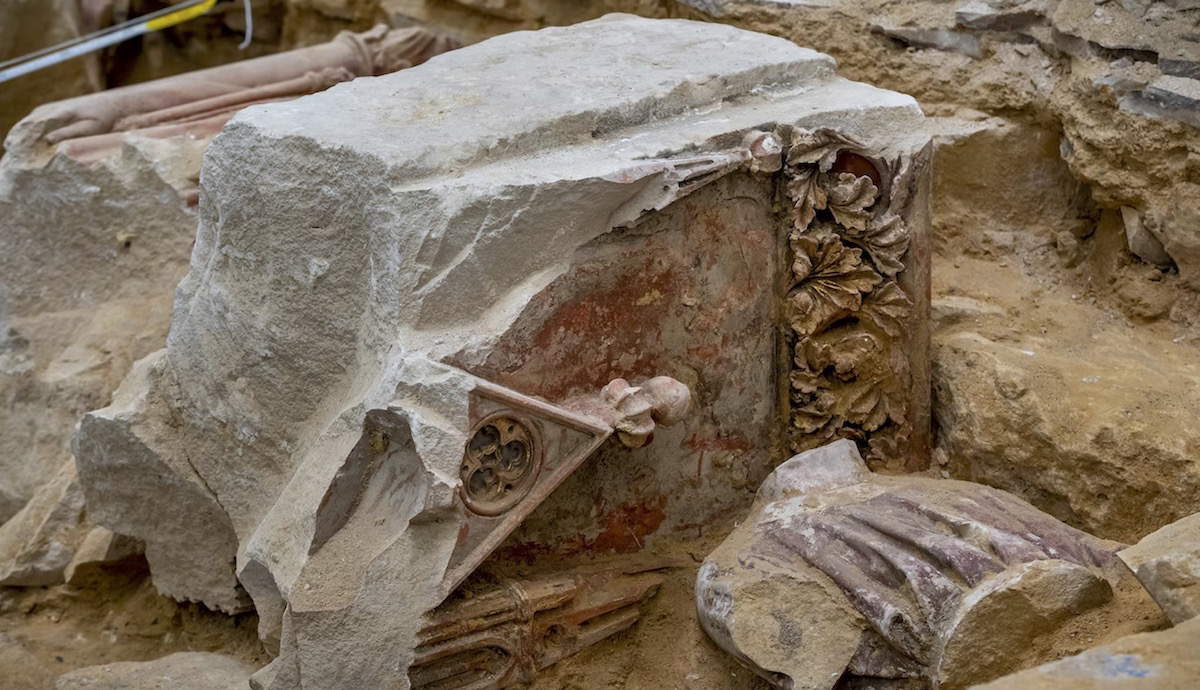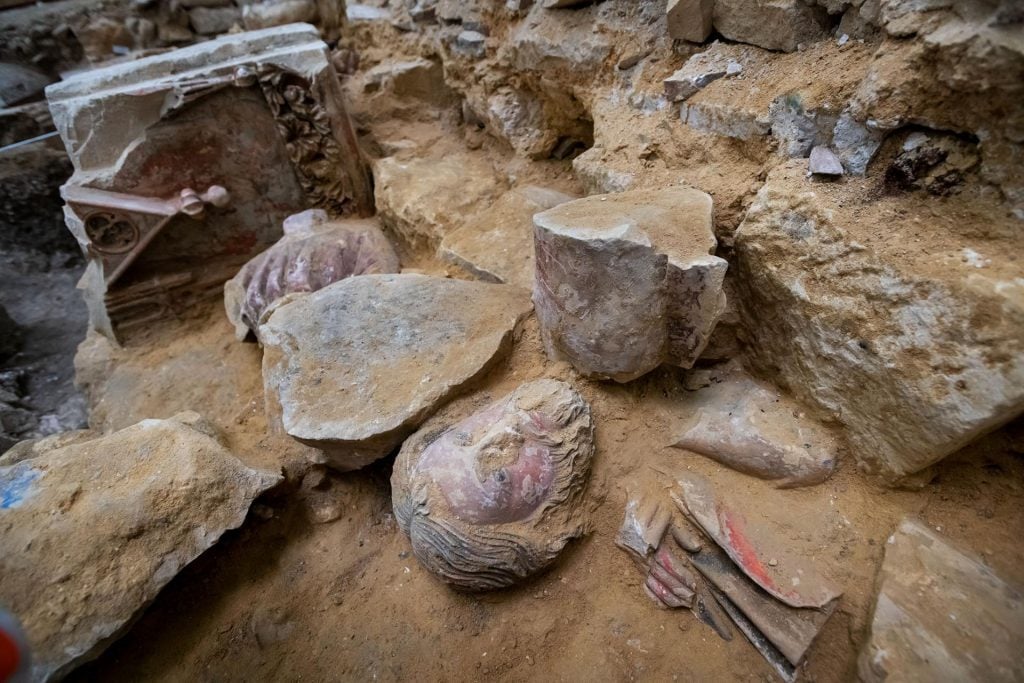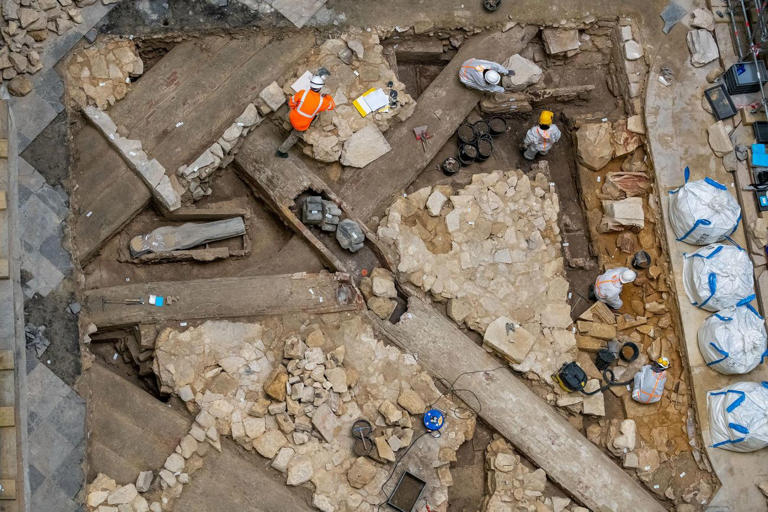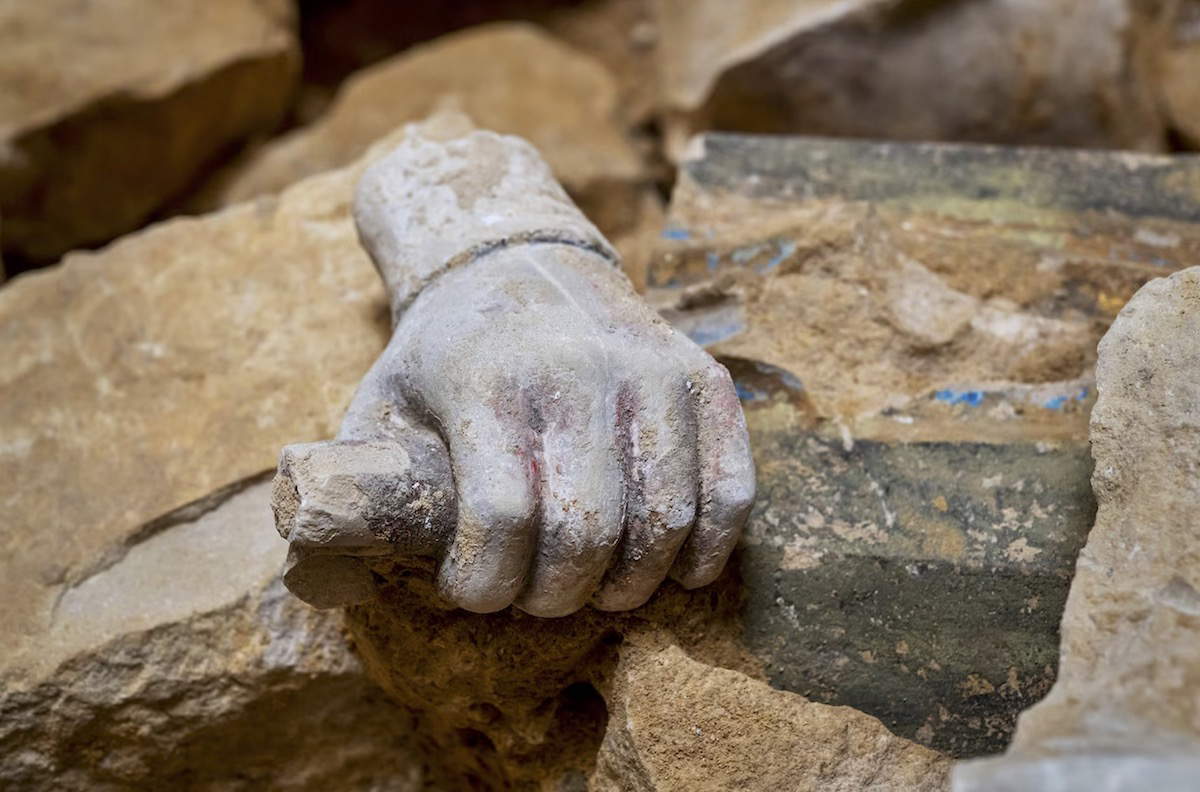Following the devastating 2019 fire, archaeologists uncovered significant artifacts beneath Notre Dame Cathedral, shedding light on its rich historical and artistic past. Among the discoveries were over 1,000 fragments of artwork, including statues, a 13th-century choir partition, and a lead sarcophagus likely belonging to renowned French poet Joachim du Bellay.

Limestone Statue Fragments: Religious Art Unveiled
The discovery of limestone statue fragments revealed intricate details of Notre Dame’s early artistic decoration. These fragments, depicting religious figures, provide insight into the Gothic style that adorned the cathedral during its construction. They underscore the central role of religious art in medieval cathedrals, highlighting the significance of the sacred space.

The 13th-Century Jubé: A Symbol of Sacred Division
A rare 13th-century jubé, or choir partition, was found during excavations. This partition, once used to separate clergy from the congregation, was a key feature in medieval cathedrals. Its discovery adds to our understanding of medieval liturgical practices and the division between sacred and secular realms.

Joachim du Bellay’s Final Resting Place
Perhaps the most intriguing find was the lead sarcophagus believed to be that of Joachim du Bellay, a prominent poet of the French Renaissance. Known for his contribution to the Pléiade literary movement, du Bellay’s burial beneath Notre Dame connects the cathedral to France’s literary heritage and deepens the cultural significance of this iconic monument.

A Rich Cultural Tapestry Revealed
These discoveries beneath Notre Dame not only offer a glimpse into the cathedral’s artistic and religious heritage but also highlight its connection to France’s literary and cultural legacy. Through the unearthing of these artifacts, we gain a deeper appreciation of Notre Dame as a symbol of spiritual devotion, artistic achievement, and literary history.


